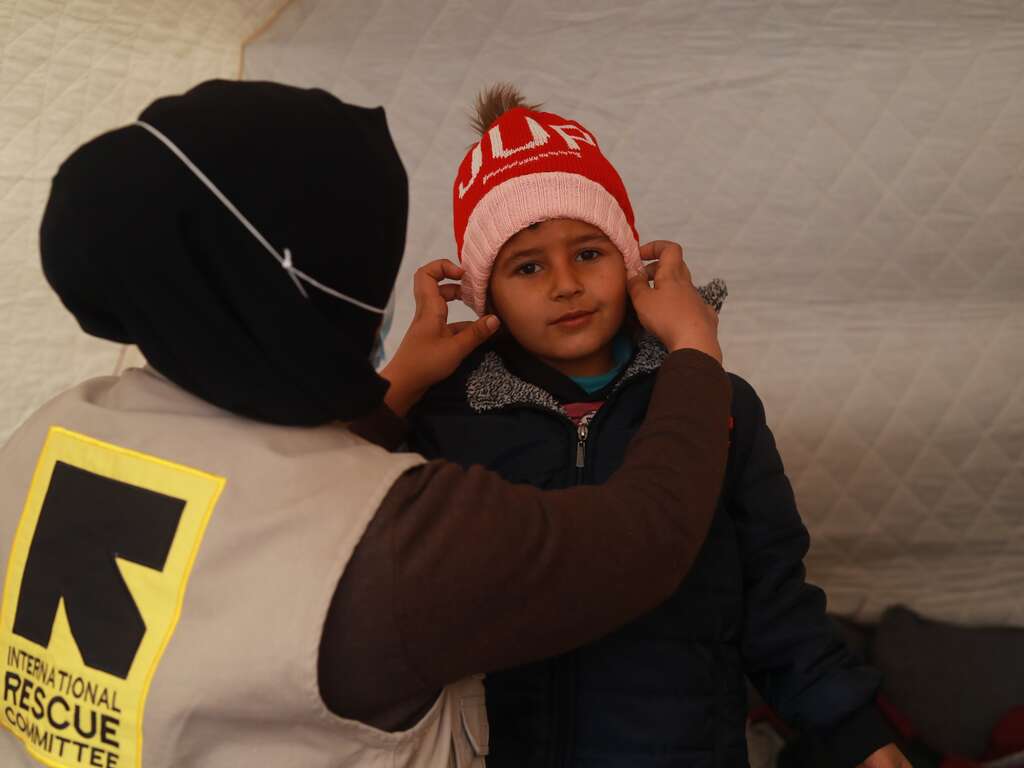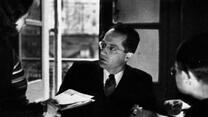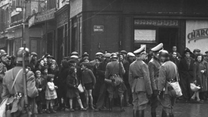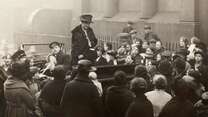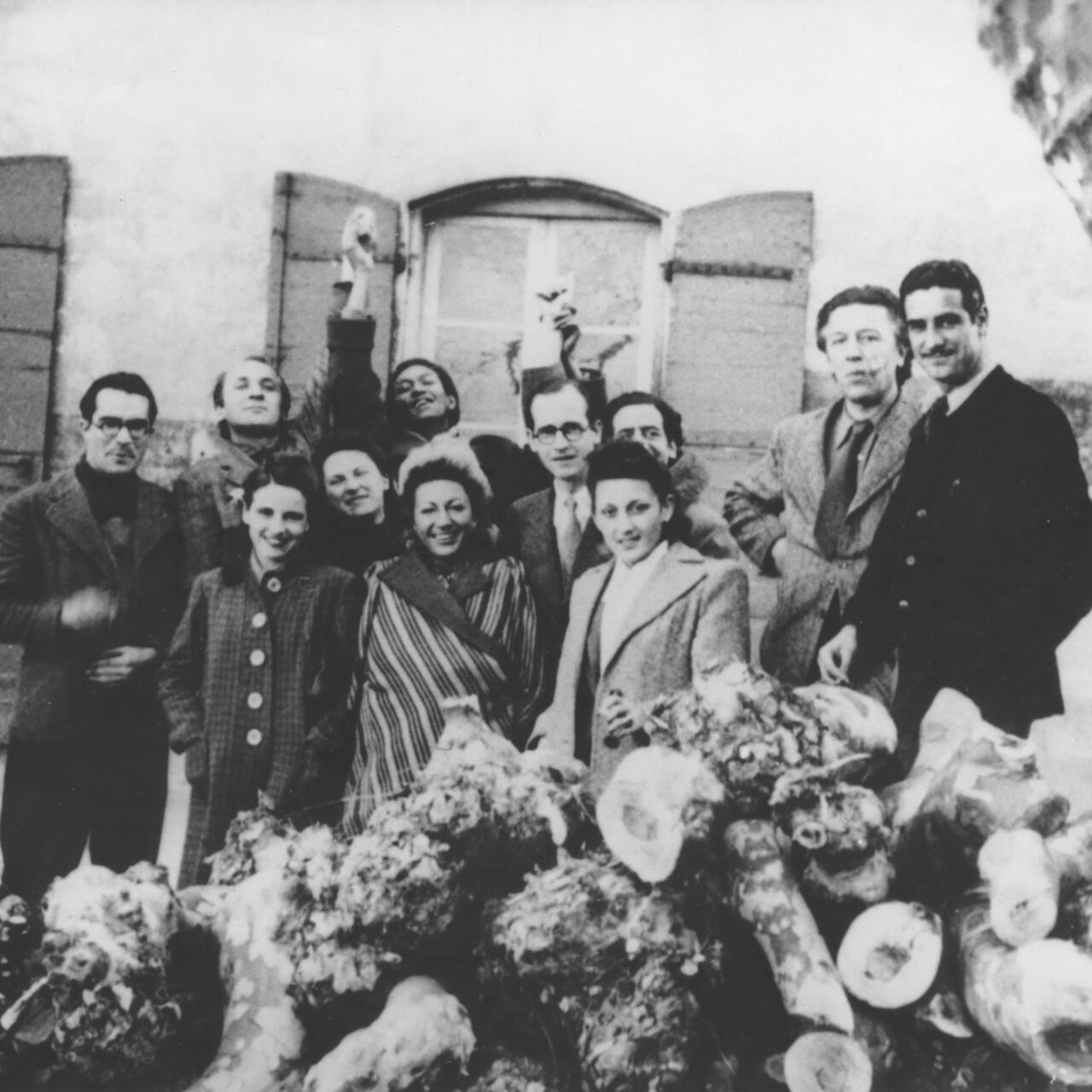
Netflix’s Transatlantic explores the story of how Varian Fry and the Emergency Rescue Committee (ERC) evacuated thousands of refugees from Vichy France during World War II. This story is also a central part of the International Rescue Committee’s history.
Read on to learn more about the work of the Emergency Rescue Committee and humanitarians like Varian Fry, Mary Jayne Gold and Albert Hirschman who inspired Transatlantic.
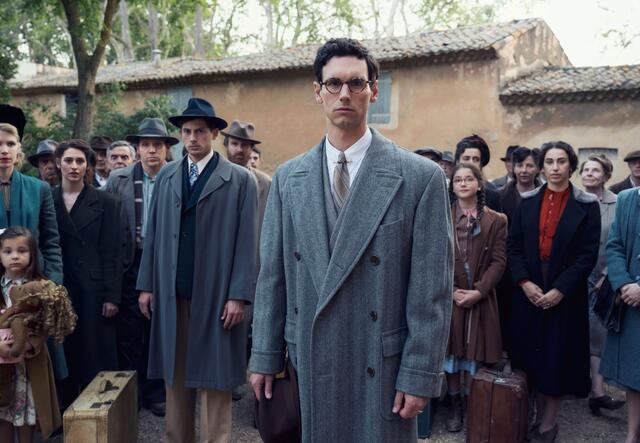
Is Transatlantic based on a true story?
Netflix’s Transatlantic is inspired by Julie Orringer’s The Flight Portfolio, a historical fiction based on the true story of an American journalist, Varian Fry, a cofounder of the Emergency Rescue Committee. Working in Marseille in Vichy France, Fry and his team of diverse humanitarians supported more than 4,000 people displaced by World War II, supplying them with cash assistance and employment opportunities. The team helped 2,000 people, who were endangered by advancing Nazism, evacuate from France.
What was the Emergency Rescue Committee?
The Emergency Rescue Committee was formed on June 25, 1940 at a luncheon fundraiser, organized in part by Varian Fry, amid concerns of the threat posed by the Nazis.
The young humanitarian organisation was particularly concerned with the Vichy-French government agreeing to a “Surrender on Demand” clause with the Nazis. This law required the Vichy regime to surrender all Germans living in French territories to the Nazis upon request. It quickly became clear that the article would be used to deport anti-Nazi activists, artists and free-thinkers to Nazi Germany, regardless of their nationality.
In response, the Emergency Rescue Committee identified 200 artists and scholars who were threatened by the Nazi’s advance in Europe, including the likes of Max Ernst, André Breton and Marc Chagall, and sent Varian Fry to assist in their evacuation.
Who was Varian Fry?
Varian Fry was a 32-year-old journalist from Virginia who had been monitoring the growing threat of the Nazi Party in Germany and Europe when he co-founded the Emergency Rescue Committee. He worked to rally political support for refugee resettlement during a time when many Americans favoured a policy of isolation.
Fry and other founding members of the Emergency Rescue Committee met with First Lady Eleanor Roosevelt, a supporter of the organisation. Roosevelt secured emergency visas for several artists and scholars endangered by the Nazis and wrote a letter of introduction that helped Fry establish operations in Marseille.
Fry departed for Marseille on August 4, 1940, with $3,000 taped to his leg, a list of 200 endangered artists and intellectuals, and instructions to help them evacuate. Shortly after arriving, he recognised the need to help as many people as possible escape Europe and expanded his work well beyond the initial list.
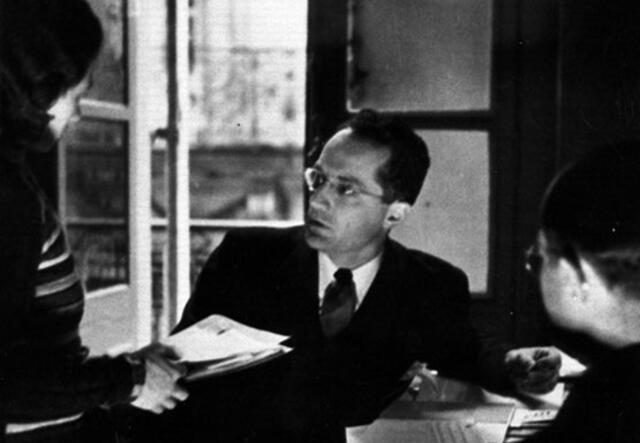
In order to meet his goal, Fry assembled a team of humanitarians from various backgrounds and national origins who risked their lives to help refugees escape the growing Nazi influence in France. From the time he arrived in Marseille, Fry was under police surveillance and the team faced constant harassment and occasional arrests from Vichy authorities. Nevertheless, Fry and his colleagues worked tirelessly to secure exit permits for refugees to leave the country and even broke the law to help some escape over the Spanish border without paperwork.
I have never worked so hard in my life, or such long hours. Strangely, though there are a dozen harrowing scenes every day, I love the work. The pleasure of being able to help even a few people more than makes up for the pain…
Some U.S. State Department officials viewed Fry’s efforts as counterproductive to relations between the U.S. and French State. This led the American consul in Marseille to pressure Fry’s return to the U.S. On August 30, 1941, Fry was arrested by Vichy police and deported the following day.
Despite being forced off of the continent, Fry continued to support refugees with his personal funds and by raising awareness of conditions in Europe through his writings.
Long after the war, in 1964, Fry began work on a major fundraiser to benefit the International Rescue Committee, the organisation created from the merger of the Emergency Rescue Committee and the International Relief Association (IRA) in 1942. The idea was to sell a cache of prints by celebrated artists such as Alexander Calder, Marc Chagall (who Fry’s team had evacuated from France) and others. In 1971, four years after Fry’s death, a limited supply of 250 copies of the “Flight Portfolio” were sold to support the International Rescue Committee’s humanitarian work.
Fry was posthumously named “Righteous Among the Nations” by the Yad Vashem Holocaust Memorial in 1994. At the ceremony, U.S. Secretary of State Warren Christopher apologised for his department's treatment of Fry during WWII.
Who was Mary Jayne Gold?
Mary Jayne Gold was an American heiress who devoted her wealth and took great personal risks to help refugees. Originally from Chicago, Gold was living in Paris in September 1939 when the American ambassador to France asked all U.S. citizens to leave the country.
Despite the warning, Gold stayed in France and set out to find a way to support refugees after the Nazis occupied Paris, though she herself had been displaced. She even donated her personal plane to the French military.
Gold joined Fry’s team officially as an interviewer and courier. She played an instrumental role in expanding the original list of 200 artists and intellectuals, personally funding the evacuations of refugees who became members of the “Gold List.” Her wealth made possible the rental of Villa Air-Bel, the residence where Fry, his team and a variety of influential artists and thinkers resided and sometimes conducted their work.
[The Nazi invasion was] like the end of the world, that everything that one believed in was being overrun by this evil thing... but on the other hand you felt that it couldn't be... nothing like that could win.
When she was forced to leave France in 1941, Gold managed to sneak information across the French and Spanish borders to British intelligence agents operating in Lisbon, Portugal. Upon her return to the U.S., she worked for the newly formed International Rescue Committee and pursued a degree in psychology with a specialisation in criminal psychology.
Who was Albert Hirschman?
Albert Hirschman was a Jewish-German humanitarian and anti-Nazi activist. Born in Berlin in 1915, Hirschman worked for a political group opposing the Nazi Party before joining the Republican faction in the Spanish Civil War. He also spent time in Italy working with the political resistance to the Mussolini dictatorship before anti-Jewish laws forced him to flee to Paris. There he falsified documents stating that he was French-American as the Nazis invaded.
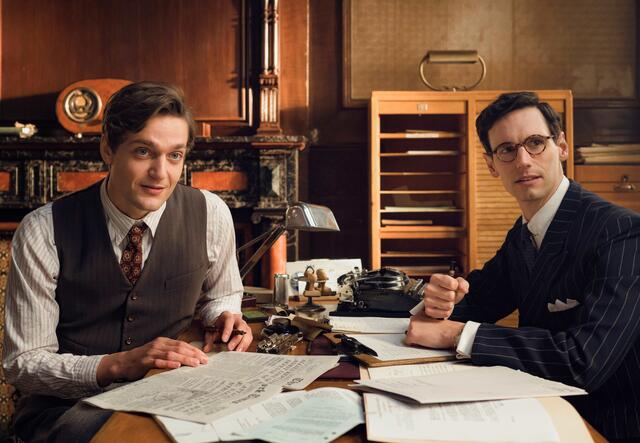
Hirschman met Varian Fry in Marseille and soon joined his team, working tirelessly as Fry’s right-hand man to support the evacuation of refugees. He enlisted Hans and Lisa Fittko, German anti-Nazi activists, who helped smuggle refugees over the Pyrenees into Spain.
Hirschman’s falsified papers kept him relatively safe, but he eventually found himself wanted by the Vichy police. In June 1941, after avoiding arrest during a raid on Villa Air-Bel, he, too, fled across the Pyrenees and eventually to Lisbon, then by ship to New York City.
Once in the U.S., Hirschman received a Rockefeller Foundation fellowship and served two years with the U.S. Army’s intelligence section until the end of the war. He would become a well-known scholar and faculty member at the Institute for Advanced Study in Princeton, New Jersey.
Is Villa Air-Bel a real place?
Villa Air-Bel was a residence on the outskirts of Marseille which served not only as an unofficial Emergency Rescue Committee office and safe house, but also as a cultural hub for artists and intellectuals endangered by the Nazis. Heiress and activist Mary Jayne Gold funded its operations.
While Fry and Hirschman discussed evacuation plans, a diverse group of prominent artists, including Wilfredo Lam, Max Ernst, Consuelo de Saint-Exupéry and Marcel Duchamp continued to make art despite the war. André Breton and his wife, Jaqueline, regularly hosted small Sunday gatherings on the villa’s grounds on Sundays, providing a respite for artists and aid workers.
Villa Air-Bel was demolished in 1970 to make way for an affordable-housing complex, Cité Air-Bel; its creative spirit lives on in sculpture classes for neighborhood children and a community TV studio.
In 2015, the International Rescue Committee established the “Airbel Impact Lab” to design, test and scale solutions for people affected by conflict and disaster. Named after the famous residence, the Airbel Impact Lab embraces the inventive thinking and innovative spirit of Varian Fry and his team.
How was the International Rescue Committee formed?
When the Nazi party forced the European-based International Relief Association to halt operations in July 1933, one of the organization’s founders, Albert Einstein, turned to the U.S. for support. The renowned physicist, himself a refugee, convened a committee of 51 influential individuals in New York and convinced them to establish an American chapter of the International Relief Association, tasked with supporting individuals who were persecuted by the Nazi regime.
In 1942, the International Relief Association merged with the Emergency Rescue Committee, co-founded by Varian Fry just a few years earlier, to form the International Rescue Committee (briefly named the International Relief and Rescue Committee). For 90 years we have provided humanitarian support to those in need.
Today, we continue Fry’s story by supporting refugees, their resettlement process and by providing humanitarian support in 40 crisis-affected countries around the world.
